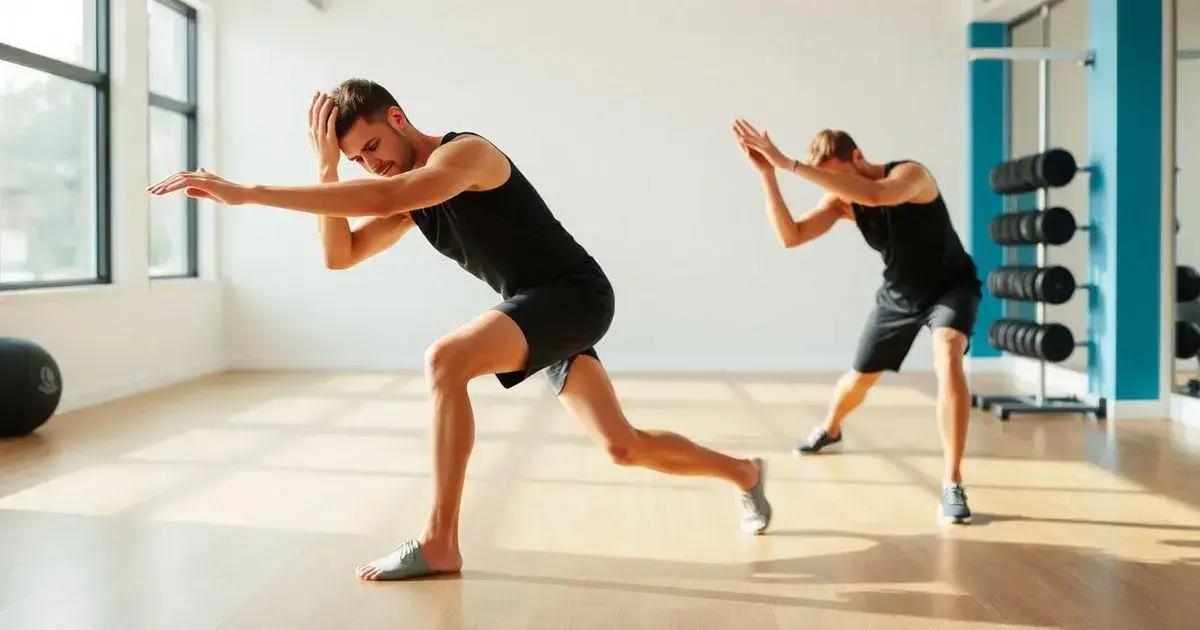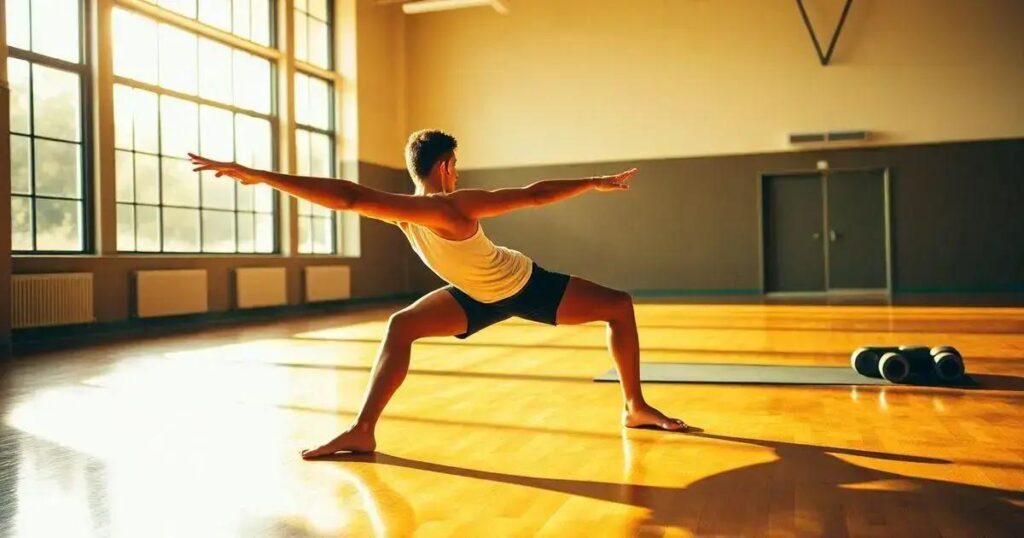Stretching before and after workouts is essential for recovery, enhancing flexibility, improving performance, and preventing injuries. Key practices include warming up before stretching, focusing on major muscle groups, and incorporating both dynamic stretching before workouts and static stretching afterward to facilitate better blood flow and muscle relaxation.
Stretching plays a vital role in workouts, significantly impacting recovery and performance. Engaging in proper stretching techniques before and after workouts enhances flexibility, reduces muscle soreness, and minimizes injury risks. In this blog post, we will delve into the importance of stretching for recovery, explore various stretching techniques, and provide best practices to optimize your workout routine.
Importance of Stretching for Recovery

Stretching before and after workouts is essential for recovery. It helps to prepare your muscles for physical activity and promotes healing afterward. When you stretch, you enhance your blood circulation, which delivers oxygen and nutrients to your muscles. This is crucial because improved circulation helps reduce soreness and speeds up recovery.
Benefits of Stretching for Recovery
One significant benefit of stretching is that it reduces muscle tightness. Tight muscles can lead to injuries and discomfort during workouts. By incorporating stretching into your routine, you allow your body to warm up and become more flexible. This flexibility lowers the risk of strains and sprains.
Moreover, stretching aids in the removal of metabolic waste products from your muscles, which can accumulate after intense workouts. This detoxifying effect helps to alleviate soreness and improves overall performance in future workouts.
Connecting Mind and Body
Stretching is also a great way to connect with your body. It encourages mindfulness and body awareness. Taking the time to stretch enables you to listen to your body’s needs. This understanding helps you determine when to push harder and when to rest, ultimately enhancing your fitness journey.
In summary, the importance of stretching for recovery cannot be overstated. It sets the foundation for successful workouts and is a critical part of maintaining a healthy and active lifestyle.
Types of Stretching Techniques

There are several types of stretching techniques that complement your workout routine. Knowing these techniques can help you maximize flexibility, improve performance, and aid in recovery.
Static Stretching
Static stretching involves holding a stretch for a period of time, typically between 15 to 60 seconds. This technique is best used after workouts to help cool down your body and increase flexibility. Common static stretches include hamstring stretches and quadriceps stretches.
Dynamic Stretching
Dynamic stretching is an active form of stretching that involves movement. It prepares your muscles for exercise by mimicking the movements you will perform during your workout. Examples include leg swings, arm circles, and walking lunges. Incorporating dynamic stretches for 5 to 10 minutes before workouts can enhance your performance.
Ballistic Stretching
Ballistic stretching involves using momentum to push your body beyond its normal range of motion. While this technique can be effective, it is essential to use caution, as it can lead to injury if not done correctly. This method is generally not recommended for beginners.
PNF Stretching
Proprioceptive Neuromuscular Facilitation (PNF) stretching is a more advanced technique. It combines static stretching and isometric contractions. Usually performed with a partner, one person stretches a muscle while the other provides resistance. PNF is excellent for increasing flexibility but should be approached carefully to prevent injury.
By understanding these various stretching techniques, you can choose the best approach for your fitness routine, ensuring that you are well-prepared for your workouts and able to recover effectively.
How Stretching Affects Performance

Stretching significantly impacts athletic performance and physical activities. It improves both flexibility and range of motion, allowing athletes to move more efficiently. With enhanced flexibility, muscles can expand more during workouts, which leads to better performance.
Improved Coordination
By incorporating stretching into a routine, athletes improve their coordination. When the muscles are flexible, they can react more quickly and efficiently. This rapid response can be crucial in sports that require swift movements, like soccer or basketball.
Injury Prevention
Proper stretching reduces the risk of injuries. When muscles and tendons are flexible, they can withstand more stress and tension. This means that movements during workouts become smoother, lessening chances of strains or sprains.
Increased Blood Flow
Stretching increases blood circulation to the muscles. This fresh oxygen helps to fuel muscles during workouts and promotes faster recovery. As blood flows more freely, the body can perform better and bounce back quicker from exhaustive exercises.
Mental Focus
Finally, stretching enhances mental focus. The time spent stretching allows athletes to center themselves and prepare mentally for their workout. This mental preparation can lead to improved concentration and stamina during intense physical activity.
Overall, the connection between stretching and performance cannot be ignored. With the right stretching routine, athletes and fitness enthusiasts can take their performance to new heights.
Best Practices for Stretching Before and After Workouts

Having a routine for stretching both before and after workouts can help maximize benefits and enhance overall performance. Here are some best practices to follow.
Warm Up Before Stretching
Always start with a light warm-up for 5 to 10 minutes before you stretch. This can include jogging in place or brisk walking. Warming up increases blood flow to the muscles, making them more flexible and ready for stretching.
Focus on Key Muscle Groups
When stretching, concentrate on the major muscle groups that you will use in your workout. For example, if you’re going to run, focus on your legs, hips, and lower back. This targeted approach ensures that the areas most engaged during the exercise are well-prepared.
Hold Each Stretch
During static stretching, hold each stretch for about 15 to 30 seconds. This time allows the muscles to relax and elongate. Remember to breathe deeply, as this can enhance the stretching effect.
Dynamic Stretching for Warm Up
Incorporate dynamic stretching routines before your workout. Movements like arm swings, leg swings, and torso twists help warm up the body while preparing your muscles for action. This can lead to improved performance and a lower risk of injury.
Cool Down and Stretch After Workouts
After completing your workout, take time to cool down. This involves reducing the intensity of your exercise and then stretching the muscles used. Static stretching post-workout helps in muscle recovery and reduces soreness.
Listen to Your Body
Finally, always pay attention to your body. If a stretch feels painful or uncomfortable, ease off. Stretching should feel good and help in recovery, not cause pain.
By following these best practices, you can ensure that your stretching routine effectively supports your recovery and enhances your workout experience.
Embracing the Role of Stretching for Optimal Recovery
Incorporating stretching before and after workouts plays a critical role in enhancing performance and facilitating recovery. It not only improves flexibility and coordination but also helps in preventing injuries.
By understanding the different types of stretching techniques and their benefits, individuals can tailor their routines to suit their specific needs. Following best practices ensures that stretching becomes an integral part of any fitness journey.
Ultimately, a commitment to proper stretching routines can unlock new levels of performance and lead to a more effective and enjoyable workout experience.
FAQ – Frequently Asked Questions about Stretching Before and After Workouts
Why is stretching important before workouts?
Stretching before workouts prepares your muscles for physical activity, improves flexibility, and reduces the risk of injuries.
What are the different types of stretching techniques?
The main types include static stretching, dynamic stretching, ballistic stretching, and PNF stretching, each serving unique purposes in your routine.
How does stretching affect post-workout recovery?
Stretching post-workout helps to relax your muscles, improve blood circulation, and reduce soreness, speeding up the recovery process.
How long should I hold stretches?
For static stretches, aim to hold each position for 15 to 30 seconds to ensure effectiveness in lengthening the muscles properly.
Is it better to stretch before or after exercise?
Dynamic stretching is recommended before exercise to warm up, while static stretching is beneficial after to aid recovery.
Can stretching improve athletic performance?
Yes, stretching can enhance flexibility, coordination, and muscle recovery, leading to better overall athletic performance.












